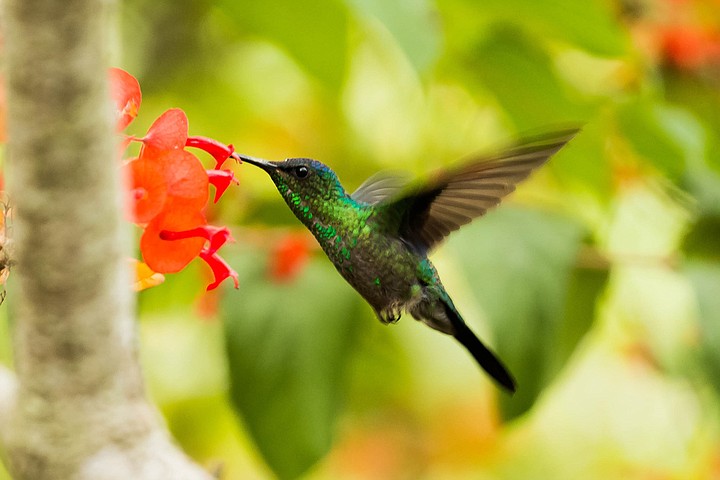 Facebook
Facebook
 X
X
 Instagram
Instagram
 TikTok
TikTok
 Youtube
Youtube

Manzanita Shrubs are starting to bloom this month in the foothill areas of the Cleveland National Forest. The various manzanitas, characterized by smooth, reddish bark and tough, leathery leaves, bear myriads of tiny, white to pinkish-white, urn-shaped blossoms. Large (decades-old) manzanitas can be seen around Julian and in parts of the Cuyamaca Mountains. Along the coast a similar, but less attractive, manzanita thrives — mission manzanita.

Hummingbirds, attracted to sources of nectar by red-colored flowers, are swarming over San Diego County’s backyard gardens, scrub-covered coastal hillsides, and areas of the Anza-Borrego Desert now in flower. Red monkey flower is a favorite source of nectar along the coastal strip, while blooming chuparosa and ocotillo play the same role in the desert.
After dinnertime at this time of year, five carnivore constellations are rising upright in a ragged row from the northeast to south. They’re all presented in profile with their noses pointed up and their feet (if any) to the right. They are Ursa Major the Big Bear in the northeast (with the Big Dipper as its brightest part), Leo the Lion in the east, Hydra the Sea Serpent slithering up the southeast, Canis Minor the Little Dog higher in the south-southeast, and bright Canis Major the Big Dog in the south.
The above comes from the Outdoors listings in the Reader compiled by Jerry Schad, author of Afoot & Afield in San Diego County. Schad died in 2011. Planet information from SkyandTelescope.org.


Manzanita Shrubs are starting to bloom this month in the foothill areas of the Cleveland National Forest. The various manzanitas, characterized by smooth, reddish bark and tough, leathery leaves, bear myriads of tiny, white to pinkish-white, urn-shaped blossoms. Large (decades-old) manzanitas can be seen around Julian and in parts of the Cuyamaca Mountains. Along the coast a similar, but less attractive, manzanita thrives — mission manzanita.

Hummingbirds, attracted to sources of nectar by red-colored flowers, are swarming over San Diego County’s backyard gardens, scrub-covered coastal hillsides, and areas of the Anza-Borrego Desert now in flower. Red monkey flower is a favorite source of nectar along the coastal strip, while blooming chuparosa and ocotillo play the same role in the desert.
After dinnertime at this time of year, five carnivore constellations are rising upright in a ragged row from the northeast to south. They’re all presented in profile with their noses pointed up and their feet (if any) to the right. They are Ursa Major the Big Bear in the northeast (with the Big Dipper as its brightest part), Leo the Lion in the east, Hydra the Sea Serpent slithering up the southeast, Canis Minor the Little Dog higher in the south-southeast, and bright Canis Major the Big Dog in the south.
The above comes from the Outdoors listings in the Reader compiled by Jerry Schad, author of Afoot & Afield in San Diego County. Schad died in 2011. Planet information from SkyandTelescope.org.
Comments